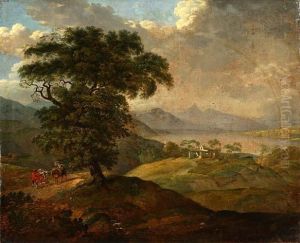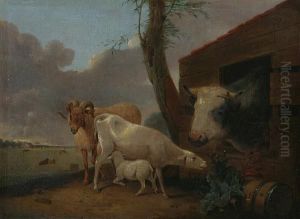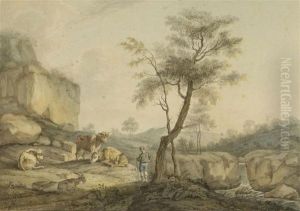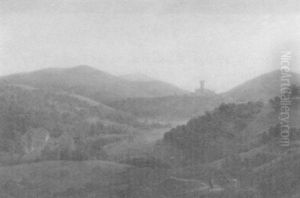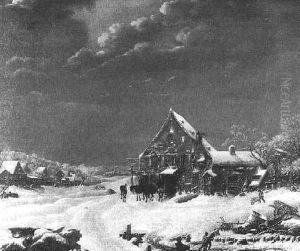Johann Adam Ackermann Paintings
Johann Adam Ackermann was a German landscape painter born on February 22, 1780, in Mainz. His artistic journey began under the tutelage of his father, Conrad Ackermann, who was also a painter. Johann's early experiences in the art world were further shaped by his studies at the Academy of Fine Arts Vienna, where he learned under the direction of landscape painter Friedrich August Brand.
Ackermann's work was heavily influenced by the picturesque and romantic styles of the time. After his education in Vienna, he traveled extensively throughout Europe, capturing the diverse landscapes of the continent. His travels brought him to Italy, where he spent a considerable amount of time in Rome, a city that served as a cradle for many artists of the era due to its rich historical and cultural heritage.
Throughout his career, Ackermann developed a distinctive style characterized by meticulous attention to detail and a harmonious use of color. His landscapes often depicted serene natural settings, with a particular focus on the interplay of light and shadow. He was known for his ability to evoke a sense of tranquility and timelessness through his depictions of European countryside scenes and architectural landmarks.
Ackermann's contributions to the world of art were recognized during his lifetime, and he gained a respectable following. He became a member of the Frankfurt am Main Art Association, which played a pivotal role in the city's cultural life. His works were exhibited in various art shows and garnered attention from art collectors and enthusiasts alike.
Johann Adam Ackermann passed away on March 28, 1853, in Frankfurt am Main. His legacy is preserved in the form of his paintings, which continue to be admired for their beauty and craftsmanship. Ackermann's landscapes provide a window into the romantic sensibilities of the 19th century and continue to be appreciated by art historians and collectors around the world.
